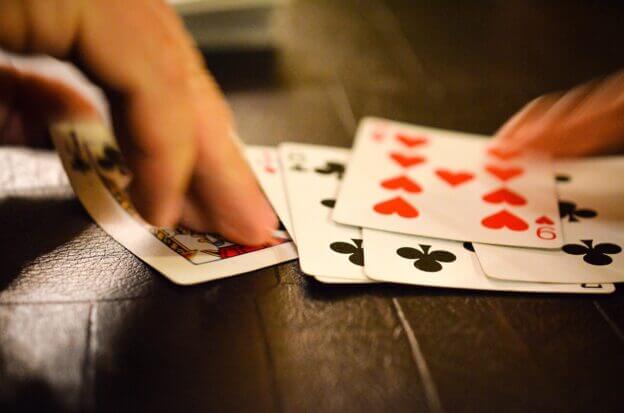Low stakes players tend to overvalue pocket aces postflop, over c-bet, and miss key hand components. This article offers advice on aligning your range with board texture for better results.
In this article, I’m going to give you some advice and some examples to help you improve your postflop PLO strategy in the most common situations when holding Aces.
C-Betting Aces in Single Raised Pots
Pocket Aces need specific components and correct characteristics in order to justify a c-bet in most scenarios in Pot Limit Omaha. You cannot c-bet them regardless of the board or the preflop ranges. This is one of the things that I see players making mistakes on all the time.
In general you want to c-bet with Aces that have high equity, that have a draw with nutted components, and if you don’t have a made hand or strong draw, you only want to bet Aces with blockers in combination with bad playability when checking.
Because Aces generally have a good amount of showdown value in many scenarios, you don’t want to c-bet and have to fold against a raise if you don’t have a strong made hand or a strong draw. If you plan to bet and fold against a raise, you need to have good reasons for it.
Aces you want to check are often medium strong hands, hands that hate to get check raised, and cannot double or triple barrel with high frequency in most runouts.
Aces in 3-Bet Pots
In 3-bet pots, pocket Aces are often used to go for a large bet right away by potting. They are very often holding marginal playability, have marginal run outs, or can deny equity by betting strong and making our opponents fold.
If you would go for a small bet on the flop and your opponent floats (calls without having a strong hand), you still have to play turns and sometimes also rivers out of position. That’s not always that great with Aces, especially if runouts and additional equity are marginal.
If we pot we can put a lot of pressure on hands that have a significant amount of equity. You can put your opponents in a scenario where they have to decide whether to go with their hand right away with a very expensive price or just fold and let their equity go.
By potting, you basically make it a one-street game, which is something that we prefer to do very often when out of position. You are telling your opponents you’re not folding, so you lower your positional disadvantage by forcing them to decide on the flop.
Aces in 4-Bet Pots
I see many players at low stakes PLO potting randomly their entire range or at least all their Aces just because the stack-to-pot ratio is low, but that’s not always true. You want to think about preflop ranges and interaction with the board.
If you 4-bet preflop, almost your entire range is built out of pocket aces.
On the other hand, in your opponents’ 3-betting range are a lot of double-suited rundowns, Aces, and some single suited combinations with run downs, as well as high pairs with connectivity.
This means that your pocket Aces will need a significant amount of equity to stack off in many board textures.
If you are holding a lot of Aces that are very disconnected and cannot better stack-off, you need to check them. And when you need to check a large portion of your range, you need to make sure to protect your checking range by checking a lot of your strong made hands.
Conclusion to Pocket Aces Postflop
When holding Aces on a single raised pot in position, c-bet with hands that have the correct characteristics, like strong draws or blockers.
In 3-bet pots out of position, use pocket Aces postflop to put pressure on your opponents and make it a one-street game.
When you’re in a 4-bet pot situation, think about range vs. range interaction with the board and build your decision based on that.
Make sure to become more aware when you’re out there sitting with Aces. Remember these tips and make the right play.



























